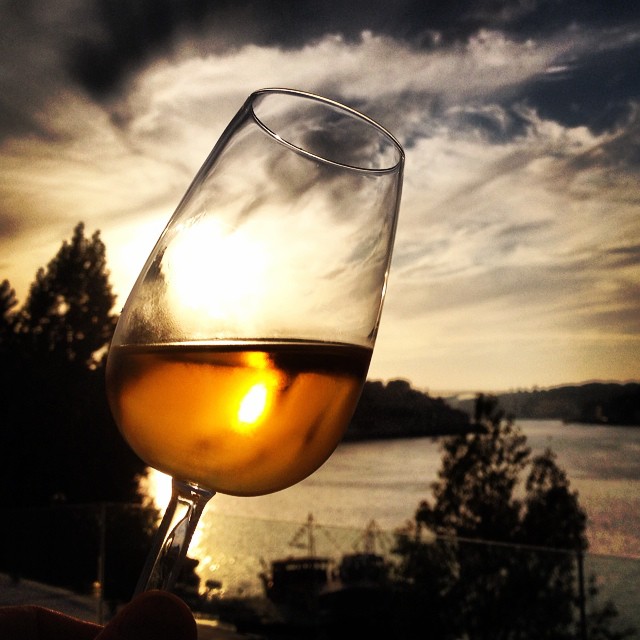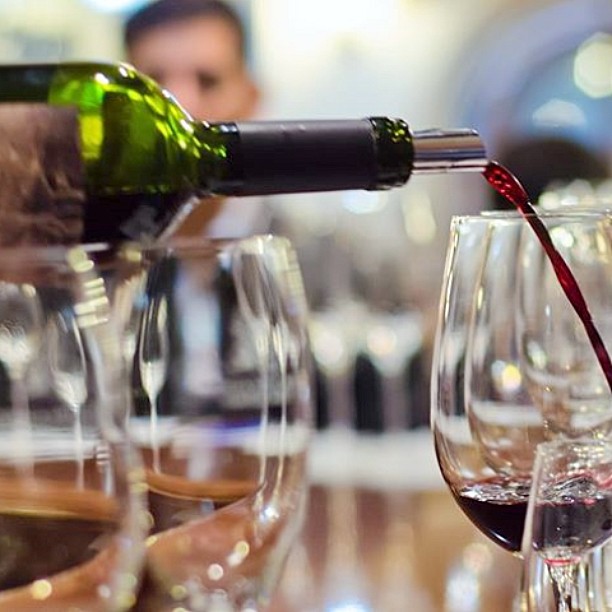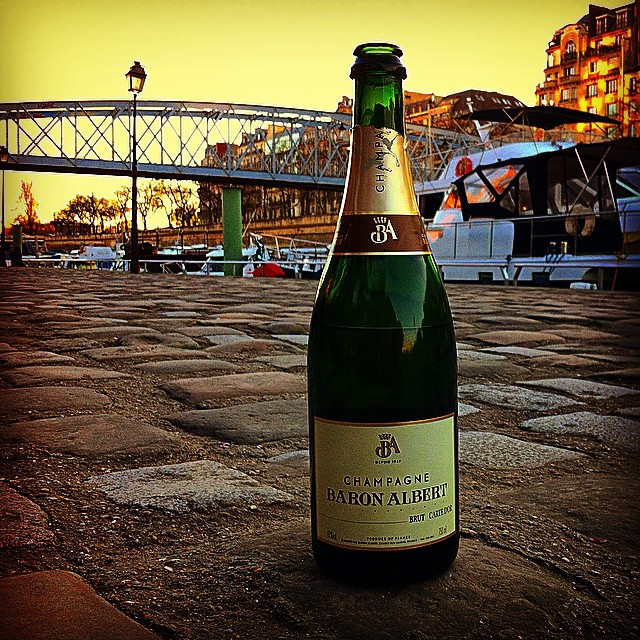
Wine is a great excuse to travel the world. Many of my best travel memories — and photos — are from touring wineries in some of the world’s great wine regions. But wine is also a splendid way to have the world come to you. Think of a wine rack as your own home united nations. If you have room for a couple dozen bottles, you have room for adventure in your own home — and a way to impress your guests and enjoy yourself at the same time.
But what should you put in your wine rack? You want to ensure not just that you have the globe covered, but that you have a good variety of wines covered. Let’s take a look at the varieties you should get for a decently stocked wine rack, and where they should come from.

These are two different grapes, yes, and you can get them in single-grape wines, but they make such lovely blends with them in Bordeaux (France) — and everywhere that does “Bordeaux-style blends” (sometimes called Meritage). Good Bordeaux is like a lean old French count with reminiscences of his colourful youth that come out slowly. It also costs a château. Ask your wine store for a recommendation in your price range, but don’t go too cheap or you’ll get a count who had a boring youth. Also get a single-grape cabernet sauvignon or merlot from California, Australia, or South Africa. It will be friendly and approachable and rich, like a well-dressed person in a beach bar. Pick your price and get what you pay for. If you prefer a slightly less lush flavour, try Chile.
This is the high-stakes table of wines. You can win big, but more often you lose — small or big. Great Burgundy is like the most amazing weekend in the French countryside, as remembered by your tongue — and never forgotten by your bank account. Bad pinot noir is like grape juice and gasoline or rhubarb juice and barn floor. Try one or two bottles at the upper end of your budget from Burgundy (France). Then try some pinot noir from elsewhere, someplace cooler like Oregon in the US or Central Otago in New Zealand. If you buy a pinot noir from California or some other warm place, you may be surprised at how hard it can be to tell apart from merlot.
Shiraz and syrah are the same grape approached two different ways. Shiraz is ready to go on safari or hit the beach. Syrah would like to have a nice afternoon or evening on the patio. Get your Syrah from the Rhône region of southern France. Shiraz is famously an Australian specialty, but — don’t hate me — I think you should get it from South Africa. The Australian ones tend to be soft and marshmallowy. The South African ones are more like drinking coffee in your leather jacket while looking out on the wild countryside.
You should have a bottle of malbec around because someone who wants to look like they know about wine will ask you if you have some. It’s a specialty of Argentina. It’s about as inky as a red wine gets, but that doesn’t mean it’s not good. You just need full-flavoured food to match with it.
You must have a red from Spain. It will probably be the driest (least sweet) red in your collection, and it will probably be made of tempranillo and/or garnacha. Bring it out when there are olives and ham. If you get garnacha, you are also covered for grenache, garnatxa, and cannonau, all names for the same grape from different places.
Chianti isn’t a grape, it’s a region in Italy. Their wines are blended from sangiovese and a couple of other kinds of grape, and they’re lively but intelligent. It’s worth having a bottle or two of this around for when you’re having pasta with red sauce or just want to sit around until well after midnight with friends and some snacks discussing the way the world is.
You must have zinfandel, but you must not have “white” or “blush” zinfandel. Zinfandel is a truly fantastical spicy dark red wine, a lotusland California specialty, like something out of a bottle made by Lewis Carroll. A few decades back when reds weren’t selling, grape growers made a light pink “blush” version by removing the skins early. It’s like a flat spritzer — what Americans call “gas station wine.” Leave it at the pumps.
If you like malbec and South African shiraz, try pinotage from South Africa. If you like Chianti and syrah, try gamay — it’s the grape of Beaujolais (France), sometimes clever but very often what people call “easy drinking.” Try other regions of Italy besides Chianti; the northern ones are crafty, and the southern ones are full-flavoured. And if you like Spanish wines, try the dry Portuguese reds. Don’t even ask what the grapes are in them. Sometimes it’s one or two, but sometimes it’s a “field blend,” which often means “My ancestors planted all these different vines and we’re not sure what they are but we harvest them together.”

Ignore the people who are all snobby against chardonnay. Some of the most wonderful white wines in the world are made with this grape. White wines from Burgundy are made from it, and you will love them. Also buy chardonnay from Canada — there are many truly delicious ones made in Ontario and British Columbia, oaked (lush) and unoaked (crisp). You may or may not like the richer California and Australia ones: many of them will taste like their childhood dream was to be a piña colada.
It is almost impossible to make terrible riesling. Always have a bottle of this around to match whatever seems to need a white wine but you’re not sure which one. There’s a style to suit everyone’s taste, from very dry through to very sweet. Riesling also ages well, though not everyone likes the “petrol” smell it can get (not really like petrol; more like a car repair shop or a metro station). Buy riesling from Alsace (which is in France but used to be in Germany) and Canada. Or Germany, since they named it.
Do you like lychee nuts? Do you eat a lot of Thai food? Gewürztraminer tastes like the one and goes with the other. To impress your friends, get it from Germany; the label will have a lot of long words on it. You can also get decent gewürz from Alsace and Canada. The German ones tend to be sweeter.
Most people who know what gooseberries taste like only know because they were told sauvignon blanc tastes like them. This is the dry, zesty white that everyone associates with New Zealand, especially the Marlborough region. But be clever. Get one from the Hawke’s Bay region of New Zealand instead, and it will taste like guava. Or buy a French one from Bordeaux or the Loire for a more restrained approach.
This wine seems popular, but you don’t really have to buy it. Some people like it, true, but I find it usually tastes like grass and water. If you’re lucky you’ll get one that tastes more like peaches, but without sugar. Anyway, if you want it, get it from Italy or somewhere in North America. If you buy the French version, pinot gris, you’ll get a bit more flavour.
This is a white grape from Portugal, and they use it to make the perfect hot day wine: vinho verde (said like “vin you vair da”). It’s usually low alcohol and typically has a light spritz to it. It’s also economical. Buy two if you have room.
There are so many white wine grapes out there. I suggest making a rotating slot: try a different white each time from some country you don’t have a wine from. Few will be amazing, but if you stay around $20, few will be awful. Just watch out for retsina — it’s a Greek white flavoured with pine resin. It’s often noted that it’s an anagram of nastier. I’ll just leave that with you.
Rosés are best made from red wine grapes that have the skin removed shortly after crushing. I am not talking about “white zinfandel.” The kind of rosé to get depends on what you like, but it’s hard to go wrong with a decent one from southern France. If you like fruity wines, try a rosé from California or Australia. Canada has some nice in-between ones.

Always have sparkling wine on hand. It’s the one wine you can have any time with anything. We all know champagne, the real stuff from Champagne in France. It’s wonderful — and you’re paying for the marketing. Buy a crémant de Loire instead and impress your friends with your wine savvy. It’s delicious and inexpensive and the lighter froth won’t speckle your spectacles. You can also get cava from Spain, prosecco from Italy, and sekt from Germany, and they’re all just fine for breakfast as long as they’re dry. Aside from the crémants, you will get the best value from California, Australia, New Zealand, and Canada. But don’t pay less than you would for a decent still (non-sparkling) wine, and make sure it’s dry.
And, for the love of Pete, don’t fire off the cork. You’ll waste wine and break things. Grip the cork firmly and turn the bottle beneath it slowly. It will come out with a sound like air brakes being let off.

Port is a nice wine for later in the evening, with cheese and dried fruit. But it’s not all the same. Skip the ruby; I mean, it’s okay, but you can do better. Bypass the vintage because it’s too expensive and you have to keep it on the rack for a whole orbit of Jupiter. Be aware that tawny port is like sweet sherry — if you like sweet sherry, then fine, but be aware. Always have a bottle of LBV (late bottled vintage) port on hand. It doesn’t really matter which. I’ve never had an awful one.
Pay very close attention to how dry or sweet a bottle of sherry is. Dry sherry and sweet sherry are as different as Bordeaux and port. Dry sherries are good for a certain mood, such as having with chilled almonds and cheese while contemplating business proposals. Most people will expect sweet sherry. My mother loves it. There’s some amazing sweet sherry out there; it’s not cheap, but you can often get it in a half bottle for a price within reach. You can do okay in a normal price range with sherry, but the cheap stuff is the most despondent beverage in the world.
I include Sauternes just for completeness. You can’t afford it. If someone gives you a bottle, thank them profusely. If they’re staying for dinner, chill it and open it with dessert. If they’re not, save it for sometime really special, such as that time you opened an incredibly expensive bottle of famous French dessert wine.
Icewine is what Canada’s famous for, though it was first made in Germany and you can also get some good value ones from New York wineries (yes, you read that correctly). But it’s expensive, and, honestly, the first sniff is like heaven, and the first taste is ecstasy, but soon after that you’re ready to pour it on your pancakes. Go instead for late harvest, or for what the Germans call auslese or trockenbeerenauslese. It will be a bit less sweet but still delightful, and your wallet may still like you.
There are many kinds of sweet wines out there, and you can keep a rotating slot — you probably won’t open a new bottle more often than every few months. There is Tokaj from Hungary, banyuls from France, vin santo from Italy, Madeira from Portugal — which is, by the way, the one wine that will keep pretty much forever at room temperature, so just save a spot for it on your kitchen counter or bookshelf — and more and more. Be adventurous. Sherry and Madeira are both good for use in cooking, by the way.
That’s your starter set, but keep trying different things. Never settle; always explore. It’s a big world out there. There are just two more things to make sure of: